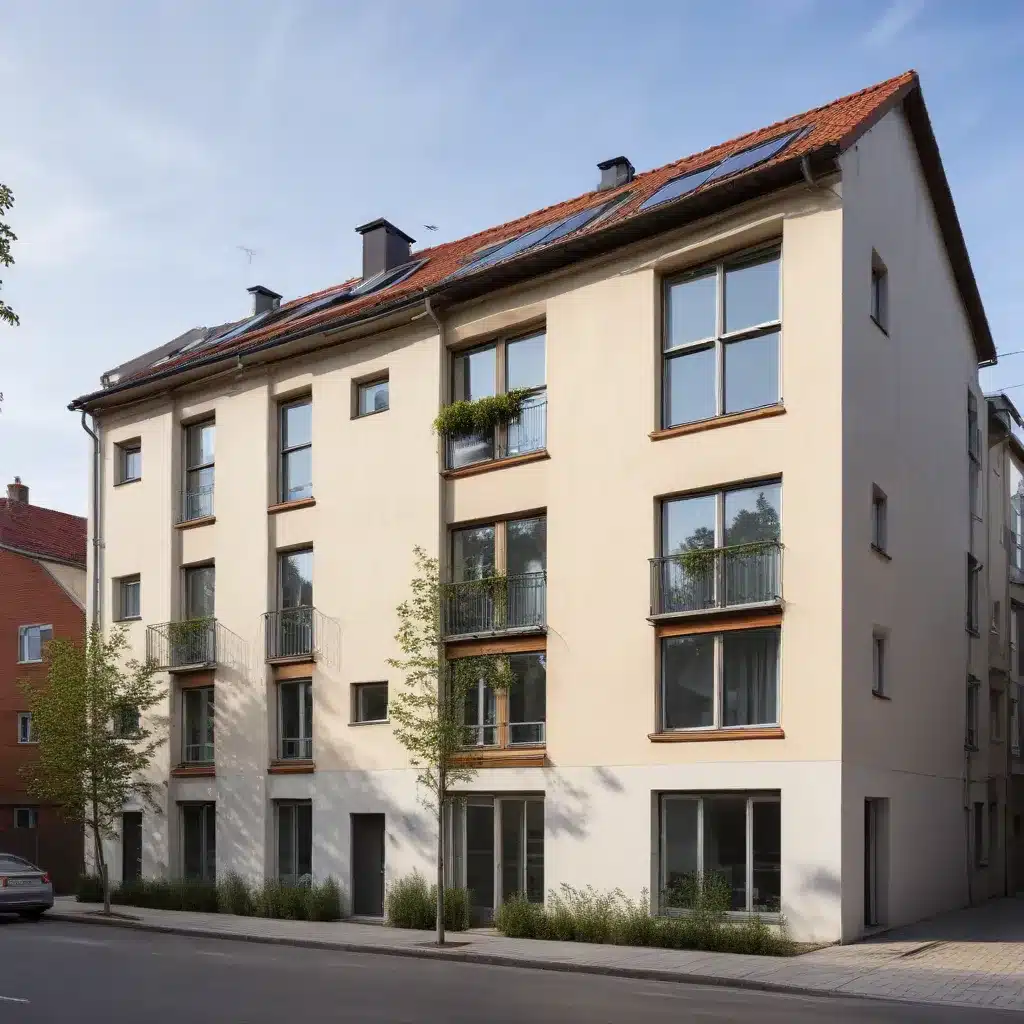
Embracing Sustainable Solutions for Greener Homes
As a seasoned IT professional, I’m well-versed in providing practical tips and in-depth insights on technology, computer repair, and IT solutions. However, today, I’d like to shift our focus to a pressing issue that affects us all – the optimization of energy retrofits and climate-adaptive design for our dwellings.
In an era where sustainability and environmental consciousness have become paramount, it’s crucial that we explore innovative ways to enhance the energy efficiency and resilience of our homes. By leveraging the latest advancements in building science and technology, we can not only reduce our carbon footprint but also create more comfortable, healthier, and future-proof living spaces.
Assessing the Challenges of Existing Homes
Many of our existing homes were not designed with energy efficiency and climate adaptation in mind. These older structures often suffer from poor insulation, outdated HVAC systems, and inefficient appliances, leading to excessive energy consumption and high utility bills. Moreover, as the climate continues to change, these homes may become increasingly vulnerable to extreme weather events, further straining their ability to maintain comfortable and safe living conditions.
To address these challenges, homeowners and industry professionals must embrace a comprehensive approach to energy retrofits and climate-adaptive design. This involves a careful evaluation of the building’s current performance, identification of problem areas, and the implementation of tailored solutions that address both energy efficiency and climate resilience.
Prioritizing Energy-Efficient Retrofits
One of the most crucial aspects of optimizing energy retrofits is improving the building envelope, which includes the walls, roof, windows, and doors. By enhancing insulation, upgrading windows, and sealing air leaks, you can significantly reduce heat transfer and improve the overall thermal performance of the home. This not only lowers energy consumption but also enhances indoor comfort and air quality.
Another important consideration is the HVAC system. Outdated or inefficient heating and cooling equipment can be a significant drain on energy resources. By replacing these systems with high-efficiency models, such as heat pumps or advanced air conditioning units, homeowners can achieve substantial energy savings while maintaining comfortable indoor temperatures.
In addition to the building envelope and HVAC systems, it’s essential to address the energy efficiency of appliances, lighting, and other household devices. Upgrading to Energy Star-certified products and implementing smart home technologies can further optimize energy usage and reduce utility costs.
Embracing Climate-Adaptive Design
As the climate continues to change, it’s crucial to incorporate climate-adaptive design principles into home renovations and new construction projects. This involves considering the local climate patterns, anticipated weather extremes, and the home’s ability to withstand these challenges.
One key aspect of climate-adaptive design is passive cooling strategies, which leverage natural ventilation, shading, and thermal mass to regulate indoor temperatures without relying heavily on mechanical cooling systems. This can be achieved through strategic window placement, the use of reflective roofing materials, and the incorporation of vegetation and green spaces around the home.
In addition to passive cooling, homeowners should also consider the resilience of their homes to extreme weather events, such as storms, floods, and heat waves. This may involve elevating the home, reinforcing the structure, and ensuring the availability of backup power sources, such as solar panels or battery storage systems.
Leveraging Simulation and Modeling Tools
The successful implementation of energy retrofits and climate-adaptive design often relies on the use of advanced simulation and modeling tools. These technologies can help homeowners and industry professionals accurately assess the current performance of a building, identify areas for improvement, and evaluate the impact of proposed retrofits or design strategies.
By utilizing building energy simulation software, professionals can model the energy consumption patterns of a home, taking into account factors such as climate, occupancy, and equipment usage. This information can then inform the selection of the most effective energy-efficient upgrades and guide the decision-making process.
Similarly, climate-adaptive design can benefit from the use of simulation tools that assess the home’s resilience to extreme weather events. These tools can help predict the impact of storms, flooding, or heat waves, enabling homeowners to make informed decisions about the most appropriate mitigation strategies.
Collaboration and Continuous Improvement
Optimizing energy retrofits and climate-adaptive design is not a one-time endeavor; it requires an ongoing commitment to continuous improvement and collaboration among various stakeholders. Homeowners, architects, engineers, and contractors must work together to ensure that the implemented solutions are effective, efficient, and tailored to the unique needs of the dwelling and its occupants.
Regular monitoring and evaluation of the home’s performance, along with the incorporation of feedback from the occupants, can help identify areas for further optimization. Additionally, staying up-to-date with the latest industry trends, technological advancements, and policy changes can enable homeowners and professionals to make informed decisions and adapt their strategies accordingly.
Conclusion: Towards a Sustainable and Resilient Future
By embracing the principles of energy-efficient retrofits and climate-adaptive design, we can create a future where our homes not only reduce our environmental impact but also provide a comfortable, healthy, and resilient living experience. Through the integration of cutting-edge technologies, collaborative efforts, and a commitment to continuous improvement, we can collectively work towards a more sustainable and adaptable built environment.
As an IT professional, I encourage you to explore the wealth of resources available on the IT Fix website to stay informed about the latest developments in energy-efficient and climate-adaptive technologies. By staying at the forefront of these advancements, we can empower homeowners and industry professionals to make informed decisions and contribute to a more sustainable and resilient future for our dwellings.












